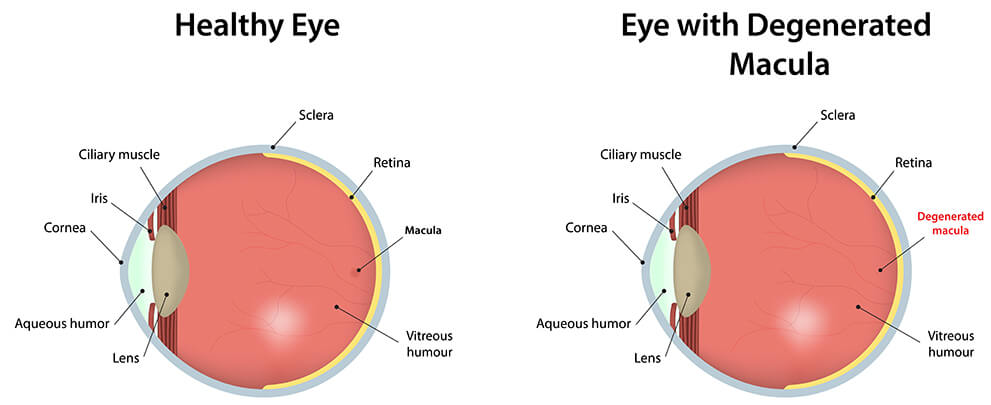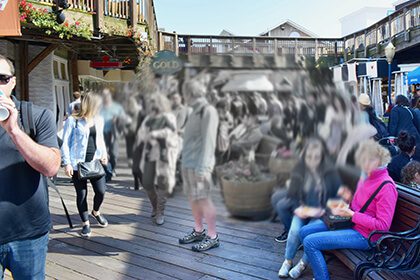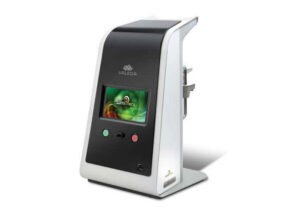Condition
Age-related Macular Degeneration (AMD) is the leading cause of vision loss and blindness in Americans ages 65 and older. The condition occurs when the macula, which is the part of the retina responsible for the sharp, central vision needed to read or drive, deteriorates. Because the macula primarily is affected in AMD, central vision loss may occur. There are two forms of AMD: wet and dry. Patients with wet AMD develop new blood vessels under the retina. This causes hemorrhages, swelling, and scar tissue. Dry AMD is much more common and is characterized by drusen (small, yellowish deposits) and loss of pigment in the retina.

Risk factors include:
- Heredity
- smoking
- blue eyes
- high blood pressure
- cardiovascular disease
Prevalence
1.75 million U.S. residents have advanced age-related macular degeneration. The number of cases is expected to rise to almost 3 million by 2020.
Symptoms

Macular degeneration usually produces a slow, or rarely, sudden painless loss of vision. Early signs of vision loss from AMD include shadowy areas in your central vision or unusually fuzzy or distorted vision. Retinal exams can detect early signs of macular degeneration before symptoms occur. When macular degeneration is suspected, a brief test to measure your central vision may be performed.
Treatment
Eye Center of Hawaii is proud to be the first and only provider on the Big Island to offer the first and only treatment for dry age-related macular degeneration that can improve vision!
✓ SAFE ✓ EFFECTIVE ✓ COMFORTABLE ✓ FDA-APPROVED

How Valeda Works
Valeda delivers photobiomodulation (PBM), a form of low-level light therapy that uses targeted wavelengths of light to boost cellular energy within the eye. By enhancing the function of retinal cells, Valeda supports healthier tissue—an essential part of maintaining strong, dependable vision.
Patients using Valeda may experience clearer vision both now and over time. Imaging of the retina has shown positive changes, including reductions in drusen, the protein deposits commonly associated with dry age-related macular degeneration (AMD).
What to Expect During Valeda Therapy
Valeda sessions are simple, gentle, and designed with your comfort in mind. The treatment does not involve eye drops, medications, or injections, and patients generally report no discomfort during or after the procedure. You’ll sit comfortably at the Valeda device while the team walks you through each step.
Each session lasts less than five minutes per eye. A full treatment series includes nine sessions, typically scheduled over a period of three to five weeks. Most patients repeat a series about every four months, though your doctor will recommend the schedule that best fits your needs.
After Your Session
Some patients notice a temporary afterimage from the bright light used during treatment. This effect—called photostress—usually fades within 15–30 seconds. Once your appointment is complete, you can return to your normal routine right away.
Wet AMD Options
Currently, Eye Center of Hawaii is excepting enrollment for a clinical trial, which seeks a new care option for wet AMD. NeoVista’s Novel Wet AMD Therapy includes a one-time treatment of a targeted dose of beta radiation to leaking blood vessels and two injections of anti-vascular endothelial growth factor. Other treatment options for wet AMD are also available.



May your New Year be filled with bright and clear vision! ... See MoreSee Less
0 CommentsComment on Facebook
Whether it's time for cataract surgery or you are thinking of LASIK, call us to schedule your appointment and start your New Year off with clear vision! ... See MoreSee Less
0 CommentsComment on Facebook
The best gift we have received this season is to be able to care for our patients' vision! Happy holidays from all of us to your o'hana! ... See MoreSee Less
0 CommentsComment on Facebook
Need a last minute recipe to bring to the holiday gathering? This one is filled with healthy fruits good for you AND your eyes! ... See MoreSee Less
0 CommentsComment on Facebook
Need a last minute gift for the person who is difficult to shop for? Have you thought about their vision? Whether it is a brand new pair of frames from one of our optical boutiques or a certificate for vision correction, we have the unique gift for your loved one who has everything, including poor vision! Stop in to one of our Island locations today! ... See MoreSee Less
0 CommentsComment on Facebook
Dry eyes can be more than just a temporary annoyance. They may be a sign of ocular surface disease, a common condition where your eyes don’t produce enough tears or the right kind of tears. 👁️💧 We are here to help with advanced dry eye treatments! ... See MoreSee Less
1 CommentComment on Facebook
𝐖𝐢𝐬𝐡𝐢𝐧𝐠 𝐲𝐨𝐮 𝐚 𝐬𝐩𝐞𝐞𝐝𝐲 𝐫𝐞𝐜𝐨𝐯𝐞𝐫𝐞𝐫, 𝐢𝐧 𝐭𝐡𝐞 𝐦𝐞𝐚𝐧𝐭𝐢𝐦𝐞 , 𝐢 𝐰𝐢𝐥𝐥 𝐚𝐝𝐯𝐢𝐜𝐞 𝐲𝐨𝐮 𝐭𝐨 𝐠𝐞𝐭 𝐢𝐧𝐭𝐨𝐮𝐜𝐡 𝐰𝐢𝐭𝐡 𝐃𝐫 *Ogbekhiulu* #DrogbekhiuluherbalHome 𝐦𝐞𝐝𝐢𝐞𝐬, 𝐡𝐢𝐬 𝐭𝐫𝐞𝐚𝐭𝐦𝐞𝐧𝐭𝐬 𝐚𝐧𝐝 𝐧𝐚𝐭𝐮𝐫𝐚𝐥 𝐦𝐞𝐭𝐡𝐨𝐝𝐬 𝐠𝐚𝐯𝐞 𝐦𝐞 𝐜𝐨𝐦𝐩𝐥𝐞𝐭𝐞 𝐚𝐧𝐝 𝐩𝐞𝐫𝐦𝐚𝐧𝐚𝐧𝐭 𝐫𝐞𝐥𝐢𝐞𝐟 𝐟𝐫𝐨𝐦 𝐦𝐲 𝐬𝐢𝐦𝐢𝐥𝐚𝐫 𝐬𝐲𝐦𝐩𝐭𝐨𝐦𝐬